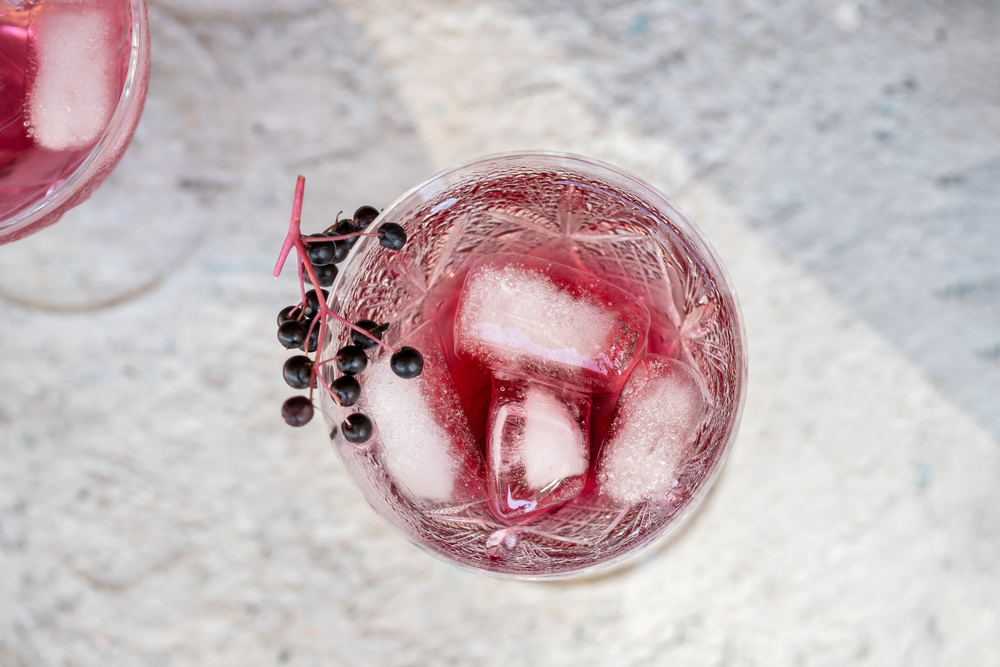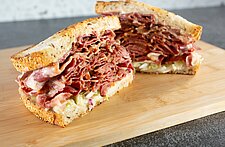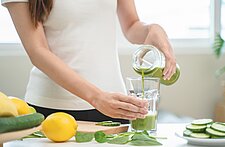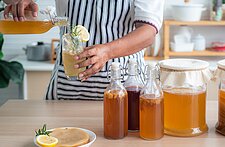Beverage trends in a rapidly transforming world tend to reflect the interests of today’s consumers. In light of a tumultuous 2020 and 2021 and the increased concern in health around the globe, it’s no surprise that drinks rich in health benefits, flavor, and unique style have skyrocketed. Below we revisit some of our most beverage-forward flavor trends from our 2021 North American Top Trends Report, let’s take a look!
Stay informed on the latest flavor trends, subscribe to our Weekly Newsletter - CLICK HERE!
Immunity Boosters
The COVID-19 pandemic transformed the way the world viewed its own health. In response to this illness, many consumers started seeking out new ways to improve their health. As a result, beverage interests throughout 2020 and 2021 reflected drinkers’ renewed interest in health-promoting ingredients, including vitamin additives, citrus, and other immunity boosters.
More specifically, consumers flocked towards drink manufacturers that promoted products with the following claims:
● High in antioxidants
● Immunity-boosting
● Anti-inflammatory
● Probiotic-rich
● Stress-relieving
Elderberry, known for its immunity associations, saw a resurgence as an additive in cocktails and teas alike. Drinks that aid in digestion and have unspecified but present health benefits also saw increased sales, especially among a younger crowd of consumers.
Ayurveda’s Back
The search for healthier beverages also reignited consumer interest in Ayurveda (or holistic personal health).
For example, you can see the influence of Ayurveda in the use of spices like turmeric or cardamom drinks on menus throughout the United States. Cardamon’s citrus, sweet, and herbal flavor profile is most popular in both whiskey cocktails and vegan drinks alike.
Botanical Boom
Consumers around the world have expressed an increased interest in natural ingredients over the past several years and this trend continues in the world of drinks. Botanicals like rose and lavender have found their way into the spotlight, serving as flavor additives and a connection to the natural world.
Sustainability and Foraging
Several Michelin-star restaurants, including Noma, have popularized the concept of modern foraging. This practice sees restaurateurs look to their immediate surroundings for new flavors and textures. While flowers like roses and herbs like thyme have retained popularity over the years, more obscure tastes are making their way onto drink menus. Scots Pine best evidences this trend.
Scots pine is a pine tree with a flavor profile that is rich in resin and leathery flavors. This profile frequently appears in cocktails and canned beers, as it dampens the sweetness of some more popular drinks. BrewDog, for example, released its LoneWolf Cloudy Lemon Gin to great success while relying on the Scots Pine flavor profile.
While pine is something of a learned love in the world of flavor, the rise of its popularity suggests consumer interest in both the new and unusual. This trend seems set to encourage restaurateurs to take more risks with their unique creations, branching out syrups and other drink additives into the natural world around them.
RELATED: 12 Global Trends Guiding the Food and Beverage Industry for 2021 and Beyond
Decadent Textures
The thrill of experimenting with new dishes is enough to excite any burgeoning chef. Nowadays, consumers are also searching for the unusual and exciting. When it comes to today’s beverages, texture holds a new sway over the active market. You only have to look at the Dalgona coffee trend from early 2020 to see that some of the most active consumers are busy transforming old favorites like coffee with new presentations.
Today, consumers worldwide have the most interest in foods that are crunchy, crispy, and fluffy. Integration of crunch and crisp into drinks has been a challenge in the past, but innovative restaurants are experimenting with add-ons to try and capture that tantalizing mouth feel.
Fluffy, on the other hand, is an old staple in the beverage industry. Whipped cream makes iced coffee and other similar beverages sweeter and more texturally enjoyable. Brands can leverage different levels of carbonation or nitrogenation to add texture to ready to drink beverages.
Trying Something New
The driving force behind these some of these trends may be the “fear of missing out,” or FOMO. Consumers today are pursuing new opportunities and chances to experiment with drinks they’ve never had before.
For example, the milk caps in Kung Fu Tea transform the way the average person experiences a tea latte. Nitrogen-based cocktails, too, take beverages made with alcohol and coffee to an experiential level.
Anticipating the Trends to Come
Staying on top of today’s beverage trends doesn’t have to be a challenge. Consumer interest lies with each individual’s concerns plus what drink opportunities will take them away from their day-to-day lives.
A renewed focus on health, flavor, and unique textures seems to reflect most consumers’ pandemic-related stress. While everyone strives to live a more healthful life, they also want to escape anxiety and confinement. How these trends will shift with the continued rise and fall of COVID-19 numbers remains to be seen.





